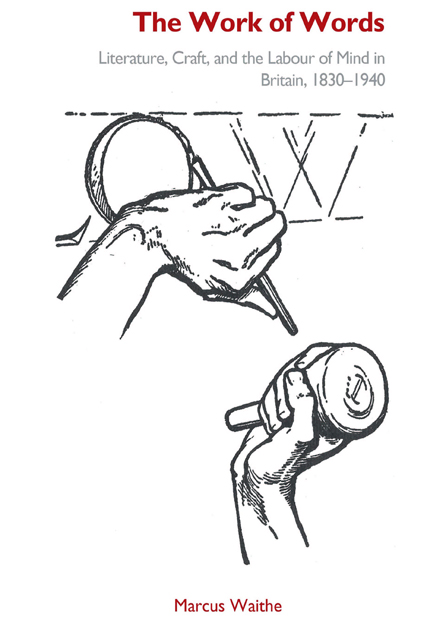Part II - Writers At Work
Published online by Cambridge University Press: 13 April 2023
Summary
Carlyle and Brown typically address labour in a form that is physically manifest, while sending attention away from the body of the observing writer in favour of a diverting spectacle. The next two chapters cover situationally diverse examples that mark a distinct change. Instead of referring ‘real’ physical work elsewhere, they hold on to it, and in the process keep the body of the writer centre-stage. Chapter 3 explores a crucial, but paradoxical case. During her years as an invalid, Elizabeth Barrett Browning felt imprisoned by her bodily circumstances. She was correspondingly keen to develop a transcendental theory of poetry. Undaunted by the apparent conflict, she nevertheless embraced Carlyle’s Gospel of Work as applied to writers, drawing equally on its artisanal and toiling strands. Much of the ensuing discussion concerns the forms of associated – and conflicted – embodiment practised by her poetry and her letters. In this regard, it would be a mistake to interpret the sick body as a compliant element. As historians of Victorian invalidism have shown, there is a quality of resistance about the passivity of the sickroom. In Barrett Browning’s case, the same applies to the poetic work that happens there, sharpened and animated though it is by pain and palpitation. Rather than conceding ground, her physical withdrawal licenses and intensifies a philosophy of determined literary action.
Chapter 4 addresses personifications of a more literal ‘literary labour’, beginning with Gladstone, who combines Homeric scholarship with woodcraft, and then Ruskin, who mixes lecturing with road-mending, harbour-building and axe-work. These cases restore the theatrical emphasis and sense of demonstration discussed in Part I, but with the difference that the writer’s body becomes the interface between contemporary working practice and the ideal of a physical-cerebral self. The chapter closes with a discussion of William Morris’s integrated theories of human making and literary composition. His self-conception as a writer acquires particular significance in charting moves towards the writerly craft ethics of the late nineteenth century. As is well known, he also engaged in practical design activity through the work of Morris & Co.
- Type
- Chapter
- Information
- The Work of WordsLiterature, Craft, and the Labour of Mind in Britain, 1830-1940, pp. 59 - 62Publisher: Edinburgh University PressPrint publication year: 2023



